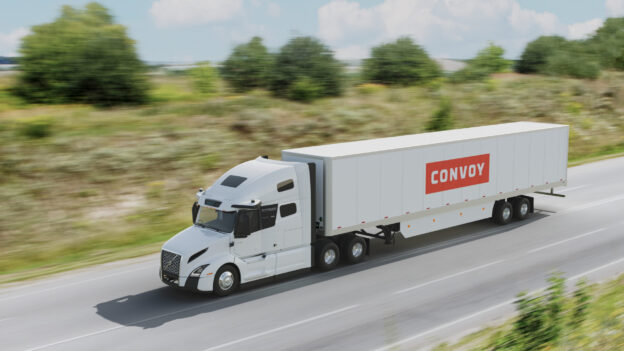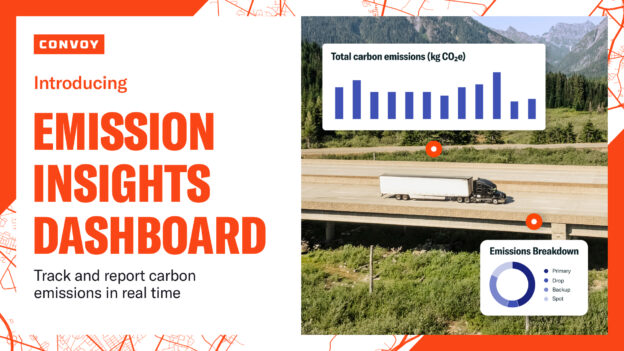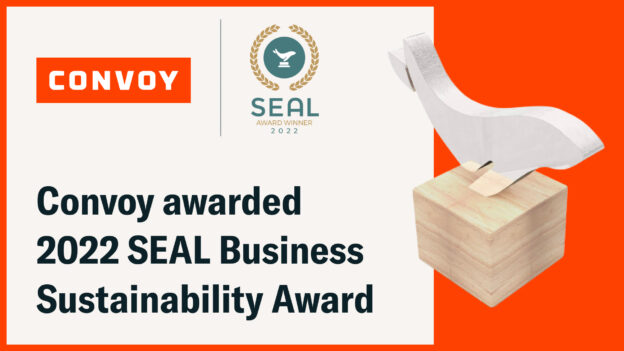The Environmental Impact of Retail
Sustainability • Published on July 1, 2020

Sustainability and the environment are linked in myriad ways to the ultimate success of a retail business. Does the sustainability conversation in retail begin as a result of a CEO’s moral imperative to do the right thing? Or is it actually driven by the growing customer loyalty to retail brands which take steps to address human rights, responsible sourcing, packaging, waste, recycling, greenhouse gas emissions, supply chain transparency, etc.
In our latest video about The Business of Carbon Emissions, we chat with Erin Hiatt, Senior Director of Supply Chain and Innovation for Retail Industry Leaders Association (RILA). Erin is the lead for RILA’s corporate responsibility portfolio, encompassing its environmental Sustainability, Responsible Sourcing, Zero Waste and Energy Management Committees. She also supports RILA’s Retail Innovation Center and Diversity & Inclusion Leaders Council.
Erin helps us take a deeper dive into the true environmental impact of the retail industry by giving us her insights to the following questions:
- Why does sustainability and the environment matter to retail?
- What are RILA’s sustainability focus areas?
- What are some of the most recent trends you’re seeing in responsible sourcing and sustainable supply chains?
- What are some of the projects RILA is working on to reduce the environmental impact of retail?
As a result of her work with a vast network of retail executives through RILA, Erin shares her views on how sustainability impacts retail on so many levels including long-term business resilience, development opportunities, the environmental impact of packaging materials at end of life and how they can be eliminated or replaced, and the feasibility of electric vehicle use.
Watch the video or read the transcript below.
Convoy provides shippers reliable, flexible, and instant capacity when they need it most. Learn more about shipping with Convoy today.
TRANSCRIPTION
Jennifer Wong: Hi everyone. My name is Jennifer. I’m the head of sustainability at Convoy. Convoy has created a series about the business of carbon emissions. You’ll hear stories, research, and innovations to learn about the fundamentals of carbon emissions, as well as how reducing them is not only good for the environment, but also good for business. Today we’re diving into the topic of retail and the environment. You’ll be hearing from Erin Hiatt, senior director of sustainability and innovation at the Retail Industry Leaders Association. Welcome Erin.
Erin Hiatt: Thank you.
Jennifer: I’m excited to dive into this topic. I know that in your role you also lead RILA corporate responsibility portfolio. It encompasses the environmental sustainability, responsible sourcing, zero waste, and energy management committees. Could you share your point of view in how sustainability and the environment matter to retail?
Erin: Sure. So, I would say sustainability matters to retail because they’re linked a lot of ways to the success of the retail business. There’s of course, what I would call kind of a pure moral imperative angle to retail sustainability which is independent of anything else. Say a company’s leadership might feel that building out a sustainability program, offering more eco-friendly products, all of those great things are just the right thing to do but also important is to identify the business imperatives for looking at sustainability and the environment. So, by that I mean companies are asking themselves questions like what aspects of the sustainability program do our customers and other key stakeholders care about most and ask for. You know, that’s a reputation question but it can also be a business development opportunity or how can not address a particular growing sustainability concern [2:00] now impact our ability to operate successfully in the future. So those answers are obviously going to differ depending on the retail company but the point is that even if the company started with kind of a moral framing to looking at sustainability, they still have to understand that customer relationship, loyalty considerations, business development opportunities and long term business resiliency risk because when you do understand that many more reasons why it matters, it’s never a bad idea to have multiple good reasons to do something. Plus, I also think it really helps give a company a better idea of what to prioritize and where to start.
Jennifer: And as you mention all of these different areas that the company could really be focused on, could you share more about RILA’s sustainability focus areas because sometimes companies use that word or use that topic in different ways.
Erin: Sure. So, sustainability at RILA is really encompassing the full corporate responsibility portfolio. We also have an ongoing focus area, for example, on responsible sourcing, which for us is about ensuring safe and ethical conditions for workers who make retail products. So, for example, we have a responsible sourcing committee that discusses those kinds of issues and then how the industry can learn and work together to help resolve challenges. But then it also includes the environmental side in our definition. So, there’s really unsurprisingly a big focus on waste issues right now and the circular economy more broadly. And so, a lot of retailers are exploring how they can take steps to make their products and packing more sustainable. So, they might be looking at materials that they could eliminate or replace. Or for the materials that need to stay, how to make sure that when a customer doesn’t need them anymore, they have a low environmental impact and end of life. So very pertinent to the supply chain conversation is reverse logistics. [4:00] This plays a huge role here for recycling generated at retail facilities because collecting that material back at a distribution or fulfillment center really helps the economics because of the volume. So definitely not all retailers have reverse logistics but something that I keep thinking about is how amazing it would be to couple, you know, an empty miles reduction effort with moving company recyclables to better consolidation points. That kind of thing. Another big theme for us has been greenhouse gas emissions. So, companies already work all the time on minimizing their O and energy consumption footprints in the buildings that they operate. But we’re talking a lot more now about indirect areas of energy use and greenhouse gas emissions. So that could be from logistics transportation or factories, you know. These are facilities that a retail facility might work with, but they don’t own so it’s more of an indirect area of influence. So that starts to get into the idea of emission scopes. Scopes one, two, three which I think you’re tacking in a different interview. But those are some of the major areas that we’re looking at and we really work around a committee structure of retail company representatives at the corporate level that will focus on one or more of those areas.
Jennifer: And I know that some of the world’s top brands are members with RILA. You just have so much different visibility into what companies are actually doing against, kind of responsible sourcing and sustainable supply chains. Can you share maybe some of the trends that have come up most frequently?
Erin: Yeah, absolutely. On the responsible sourcing side, you know, there’s this, obviously, always a macro-focus on human rights within supply chains, making sure workers are safe and treated well so there’s a lot of emphasis right now on exploring technology and how we can support those efforts and make the work really more efficient and effective so that we have better visibility, better transparency into more of the supply chain so that not everything is so fully dependent on [6:00], you know, a physical audit on a periodic basis. How can we check in with them more often? When it comes to sustainable materials sourcing, there’s a lot of interest right now in sourcing products and packing materials that have lower environmental impacts from a materials perspective. So, it might be higher recycled content, it might be items made with, you know, ocean bound plastics or materials that are more easily recycled, or reused, or composted once the customer no longer needs them. We’ve also seen an uptick in company goals and commitments around that in addition to their facility waste diversion goals. So, they’re really looking at what the customer’s journey is with the item. And then around greenhouse gas emissions, it’s again, looking deeper into the areas that will require collaboration with supply chain partners. So, I would note the uptick in retailers, either setting or committing to set science-based targets. It’s been really interesting for me to watch because it reflects, I think, a general trend in sustainability towards aspirational goals but then also goals that have a more defined context and then, you know, in some cases an actual common methodology.
Jennifer: And as we wrap up, I have one more question for you, related to the different projects and collaborations you are working on at RILA. Can you share the highlights of what you’re working on to reduce the environmental impact of retail?
Erin: An interesting one right now that I think is relevant to this audience is probably research we’re doing collaborating around electric vehicles in retail. So different applications that definitely tie into that emission strategy trend. So, we have a research project team that includes a non-profit called C2ES and there’s a firm also called Atlas Public Policy. And so, we’ve already actually released the initial wave of resources [8:00] which are around supply chain fleet electrification. There’s a tool around EV truck total cost of ownership, which is pretty cool. So those resources really focus on, kind of what’s still left to figure out before we would see a large wave of adoption of EV trucks while we’re seeing retailers more looking at, you know, piloting and testing for now. So RILA’s role in that was to help arrange interviews with some of our members. We allowed an opportunity for them to present findings at our link supply chain conference, that was back in February. And so, there’s a phase two of that coming which is going to look at the passenger charging side. So, charging stations offered to customers at retail stores and how those projects can be organized and what stakeholders, retailers would need to talk through throughout that process if they’re considering it for the first time. So, that’s coming up within the next couple of weeks which is pretty exciting.
Jennifer: Looking forward to that! Thank you so much for making time to join us for the series.
Erin: Yeah, you’re so welcome. Thank you so much for inviting me.



